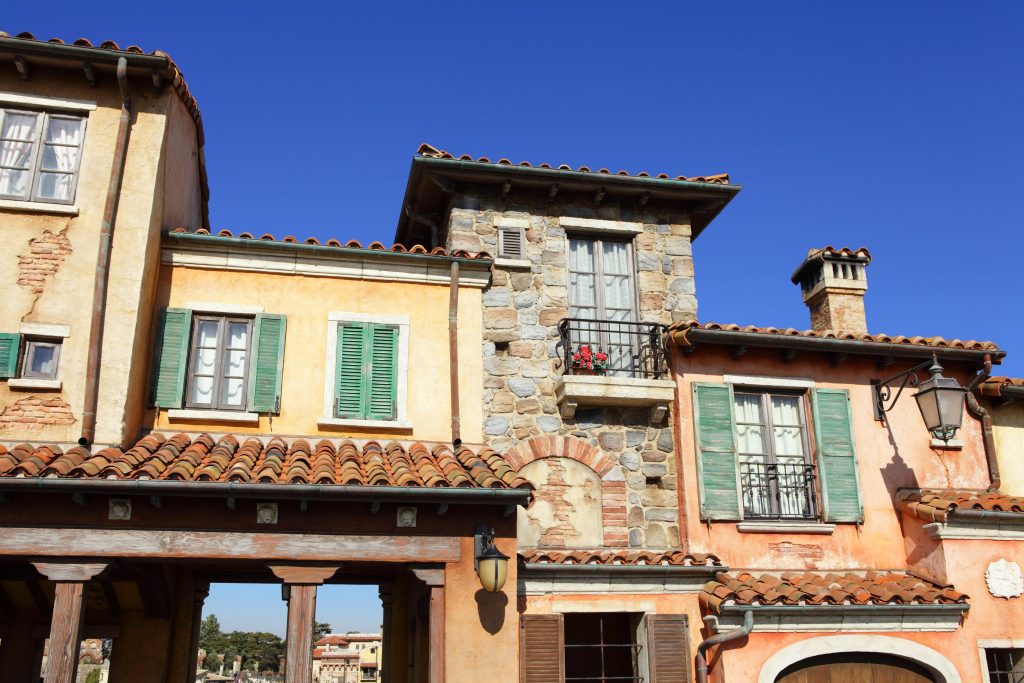Mediterranean Style House Design

The Mediterranean style has been around for a long time and is loved for its kindness, grace, and natural link to the outside world. This style gets its ideas from the sunny scenery of Spain, Italy, and Greece. It mixes rustic charm with casual luxury with ease. The thing that makes it appealing is that it can turn places into warm, airy, and calm places that feel like living on the coast. Earthy color schemes like warm brown, terracotta, and yellow, with touches of blue and green, are important parts of Mediterranean-style houses. Natural materials like wood, stone, and wrought iron, along with painted walls and lots of natural light, make the indoors and outdoors feel like they belong together. This makes it a great choice for modern homes that want a touch of European beach charm.
Key Characteristics of Mediterranean Style Homes
Mediterranean home design is influenced by the seaside areas of Southern Europe, especially Greece, Italy, and Spain. It has unique building and internal features that come from these places. Red-tiled roofs and stucco walls are well-known features that give buildings a warm and traditional feel. These features are often used as a background for beautiful arches and wrought-iron accents that give the room a touch of country luxury. Adding these kinds of details not only makes the style look better, but it also shows how historical and culturally rich the Mediterranean style is.
A big part of Mediterranean design is making sure that rooms are open, bright, and full of natural light. This method makes the space feel warm and inviting, removing the lines between life inside and outside. A lot of homes have big windows, gardens, and decks that let people enjoy the views and nice weather that comes with living in the Mediterranean. This smooth flow from inside to outside is important for getting the style’s signature look of beauty and comfort.
The beach style of Mediterranean houses is also shown in the colors they use. Warm and inviting earthy tones like beige, terracotta, and orange make the base, and touches of rich blues and whites bring to mind the peaceful beauty of the sea and sky. Along with making the room look better, these colors also add to the general feeling of calm and relaxation that is typical of Mediterranean designs. All of these parts work together to make a beautiful, classic design that captures the spirit of the coastal scenery in Southern Europe.
Incorporating Natural Materials for Authenticity
For example, clay, stone, wood, and iron are all natural materials that are important to Mediterranean style and give it its beauty. These materials are not only beautiful to look at, but they also give a place a sense of being real and timeless. With their warm, earthy tones, terracotta tiles bring to mind sunshine-soaked scenery and can turn a room into a peaceful, welcoming retreat. Whether it’s on the floor or the walls, stone has a rough, unpainted look that reminds me of the rural charm of old European towns. When these materials are used together, they make a smooth link between the indoors and the outdoors, which makes the home feel more peaceful and grounded.
Adding rustic touches like uncovered wooden beams and mosaic tiles makes the Mediterranean theme even stronger, giving the room more depth and personality. Exposed beams, which are often made from old wood, give a room a sense of stability and history, making me think of farmhouses in the rolling Tuscan hills that are hundreds of years old. With their complicated designs and bright colors, mosaic tiles add a bit of art and culture that makes you think of old buildings in the Mediterranean. These features not only improve the look by adding visual interest, but they also create a lived-in, natural atmosphere that is both cozy and classy. By using these natural materials and rustic details, houses can reflect the unchanging beauty and simplicity of interiors with a Mediterranean style. This can create rooms that are both ageless and deeply connected to the earth.
Creating an Inviting Outdoor Space
In Mediterranean-style houses, where the lines between indoor and outdoor areas are carefully softened, outdoor living is an important part of everyday life. Courtyards, patios, and porches aren’t just extra rooms that are attached to the house; they’re important parts that make life better. These areas are meant to be both welcoming and useful, and they are often decorated with lush plants and grown plants that bring life and color to the space. Seating areas with soft, roomy seats in bright colors are great for relaxing and getting together with other people. By making it easy to move from inside to outside, these homes give you a daily link to nature, which makes you feel calm and open.
Fountains and ponds, among other water features, are very important to the Mediterranean style. Not only does a bubbling fountain in a patio or a reflecting pool surrounded by natural stone tiles look nice, but they also make relaxing sounds that make the mood better. These features, along with the smart use of natural materials like stone and wood, make the indoor and outdoor areas feel even more connected. The end result is a beautiful and useful space that makes you feel like you’re living a peaceful and lovely life in the Mediterranean.
Decor and Furniture: Enhancing Mediterranean Aesthetics
It’s important to choose furniture for a Mediterranean-style home that is both comfortable and embraces the rustic beauty that is typical of the style. Weathered wood furniture is a classic choice because it looks good for a long time and is durable. These can look like painted cabinets, tables made of rough oak, or chairs made of wood that has been worn down over time. They add a feeling of history and warmth. With their detailed designs and strong constructions, wrought-iron accents are also very important for adding to the Mediterranean style. Think about coffee tables, bed frames, and lamps made of cast iron. They add a touch of class while keeping the room’s feel grounded and earthy.
Along with basic furniture, adding soft fabrics is an important part of making a space feel warm and welcome. Overstuffed sofas and chairs with soft, neutral-colored blankets or bright, printed pillows add a touch of luxury and comfort that makes you think of the warm welcome you’d get in the Mediterranean.
To finish off the look, artistic accents are very important for capturing the spirit of Mediterranean style. Pottery, especially big pots or bowls that were made by hand, adds color and style. Rugs with deep piles and patterns that look like they were made in Persia or Morocco can help hold a room together and make it look nice. Lanterns and hanging lights are examples of intricate lighting pieces that not only provide light but also act as focus points, adding to the overall look with their beautiful craftsmanship. When put together, these elements make a beautiful mix of luxury and rustic charm that can turn any home into a peaceful Mediterranean getaway.
Conclusion
Mediterranean interior design is a unique style that combines comfort, grace, and timeless beauty. It gets its ideas from the coasts of Spain, Italy, and Greece in southern Europe. This style uses natural materials like stone and wood and emphasizes open areas that let in lots of natural light and make the inside feel like an extension of the outside. Textured walls, rustic furniture, bright textiles, and unique features like arched windows and beautiful tilework are all signs of Mediterranean design. By adding these things to your home, you can make it a calm place that feels warm and elegant. This design is appealing because it celebrates simplicity and a deep appreciation for life’s joys. It makes for a living space that feels both warm and fancy.







